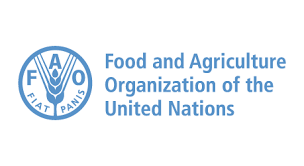FAO’s Agriculture and Market Information System (AMIS) and Its Latest Monitor
FAO’s Agriculture and Market Information System (AMIS) is an inter-agency platform that was set up to boost transparency in the food market and promote policy response for food security. In its latest monitor, the AMIS revealed that India’s corn, soyabean and rice production will be affected due to the El Nino weather event.
Key Findings of the Latest AMIS Monitor
- The likely El Nino weather event has been predicted to cause severe droughts over Australia, Indonesia, and parts of southern Asia, including India.
- Maize, soybean, and rice production in India could be affected because of the El Nino.
- The impact of the potential El Nino is uncertain as no two events are the same with regards to strength, duration, or localised mitigations. However, over 25% of global croplands are estimated to be affected by El Nino-Southern Oscillation (ENSO) events.
- Based on previous data, ENSO events typically have a minor positive effect on global soybean yields, but lead to a decrease in global maize, rice, and wheat yields.
- Maize is typically more affected compared to other crops.
- Also, negative impacts tend to be lessened for irrigated crops compared to those that are rainfed.
- Maize and soybean productivity in India, north China plain, southern Mexico, north-east Brazil, Indonesia, West Africa, and southern Africa will likely be affected by the potential El Nino.
- On the positive side, maize and soybean production will likely gain in Midwest US and southeast South America.
- Wheat yields may also rise in the US southern Great Plains, China, Central Asia, and southeast South America.
- Reduction in yields in one region might be balanced by increases in another. Thus, any potential negative impact on crop yields in one region might be offset at the global level.
South Asian Climate Outlook Forum (SASCOF) and El Nino
The South Asian Climate Outlook Forum (SASCOF), backed by the FAO’s weather arm World Meteorological Organization (WMO), recently predicted that the south-west monsoon could witness normal to below normal rainfall over most parts of South Asia. However, there is no indication of the strength or duration of El Nino yet, according to the WMO. Probabilities for the development of El Nino later during the year are 80% or more. While El Nino can significantly lower crop yields in some regions, the WMO said that depending on its strength, it could also lead to average to above-average rains in several parts of the world while other areas might experience drier-than-average conditions.
Month: Current Affairs - May, 2023
Category: International / World Current Affairs


